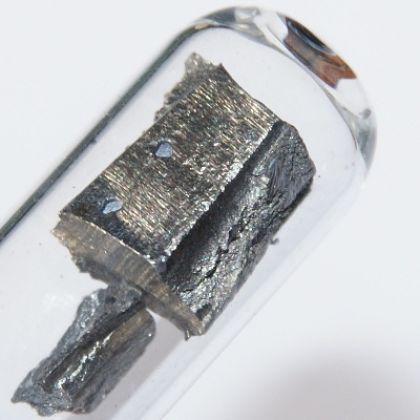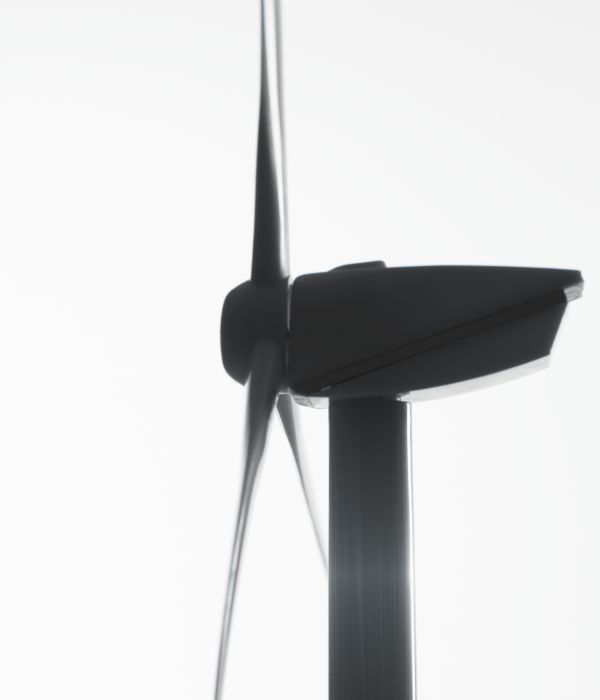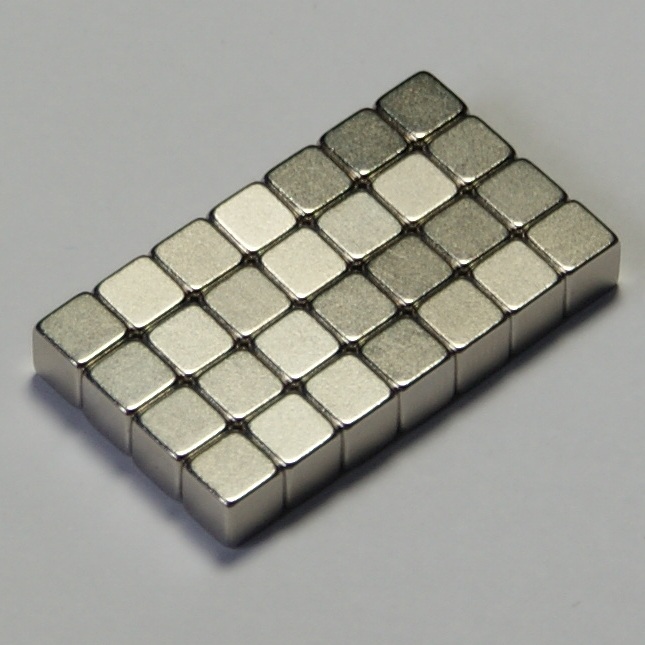ND • Atomic Number 60

Neodymium
Neodymium is a silvery-white, highly reactive metal that oxidizes easily in air. It belongs to the group of light rare earth elements.
Its most important property is its extremely strong permanent magnetism when alloyed with iron and boron. Based on this property, the most significant application by far is the production of neodymium-iron-boron (NdFeB) magnets.
These magnets are found in a wide range of applications, making neodymium economically one of the most important rare earth elements.
Neodymium was first isolated together with praseodymium in 1885 by Carl Auer von Welsbach from didymium, which had been discovered by Carl Gustav Mosander. Pure metallic neodymium was not produced until 1925.
Rare Earth Elements

Neodymium in High-Performance Magnets for Wind Turbines
Neodymium is primarily extracted from bastnäsite and monazite. The neodymium content in both minerals is approximately between 15 and 20 percent.
Monazite has the disadvantage of often containing radioactive thorium, which complicates the further processing and storage of the ore.
China is the leading producer, as with other rare earth elements. Another important source of bastnäsite is the Mountain Pass mine in the USA.
After an elaborate separation of neodymium-associated elements, the oxide is converted with hydrofluoric acid into neodymium fluoride and subsequently reduced to metallic neodymium using calcium, producing calcium fluoride. Residual calcium and impurities are removed by remelting under vacuum.
Until 2024, MP Materials, the operator of the Mountain Pass mine in the USA, sent the mined bastnäsite ores to China for further processing. Since then, the company has operated its own processing facility. In 2025, as a protective measure, the U.S. Department of Defense became the majority owner of MP Materials.
By far the most important industrial application of neodymium is the production of permanent magnets, known as neodymium-iron-boron magnets (NdFeB magnets).
NdFeB magnets have the highest magnetic energy density of all commercially available permanent magnets. They generate a very strong magnetic field, are small and lightweight, and significantly improve the efficiency and performance of electrical devices.
These magnets are used in a wide range of key industries, with the automotive sector standing out, as permanent magnets are used in the electric motors of electric vehicles. They also play a crucial role in wind power plants: generators in modern wind turbines—especially direct-drive systems—use these magnets to convert rotational energy into electricity with high efficiency. A large offshore wind turbine can contain one ton or more of neodymium.
Thanks to NdFeB magnets, device miniaturization is possible. They are found in speakers, headphones, and hard drives.
Additionally, neodymium is used in glass dyes (e.g., welding goggles) and in lasers (Nd:YAG lasers).

| General Information | |
| Name, Symbol, Atomic Number | Neodymium, Nd, 60 |
| Series | Lanthanoid |
| Groupe, Periode, Block | La, 6, f |
| Appearance | Silvery white, yellowish |
| CAS-Number | 7440-00-8 |
| Abundance in Earth's crust | 22ppm |
| Atomic Properties | |
| Atomic Mass | 144.24 u |
| Atomic Radius | 185 pm |
| Covalent Radius | 201 pm |
| Electron Configuration | [Xe] 4f⁴ 6s² |
| 1. Ionization Energy | 533.1 kJ/mol |
| 2. Ionization Energy | 1040 kJ/mol |
| 3. Ionization Energy | 2130 kJ/mol |
| 4. Ionization Energy | - |
| Physical Properties | |
| State of Matter | solid |
| Crystal Structure | Hexagonal |
| Density | 7.003 g/cm³ (at 25 °C) |
| Magnetism |
Paramagnetic (χm = 3.6 * 10⁻³) |
| Melting Point | 1297 K (1024 °C) |
| Boiling Point | 3373 K (3100 °C) |
| Molar Volume | 20.59 * 10⁻⁶ m³/mol |
| Heat of Vaporization | 285 kJ/mol |
| Heat of Fusion | 7.1 kJ/mol |
| Electrical Conductivity | 1.56 * 10⁶ A/(V·m) |
| Thermal Conductivity | 17 W/(m*K) |

